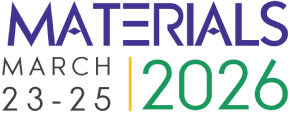Title : Testing methods for the assessment of prestressed concrete members
Abstract:
Two common procedures are used for prestressing a concrete member through reinforcement: pre-tensioning and post-tensioning. In the former case, the prestressing reinforcement is tensioned in a casting bed prior casting the concrete, and the prestressing force is transferred to the concrete by bond when the reinforcement is released after sufficient strength is attained by the concrete. In the second case, the prestressing reinforcement is tensioned after concrete casting, and the prestressing force is introduced by anchor heads at the member ends.
National and international main codes provide specifications and requirements for prestressing design of prestressed concrete members, so the designer set the initial prestressing force and must estimate the prestress losses along the service life of the member. Upon service loads, overestimating prestress losses can lead to excessive camber and inefficient designs, while underestimating prestress losses can result in excessive deflection and unexpected cracks.
The accurate determination of the residual prestressing force is essential in the assessment of existing prestressed concrete members. However, the residual prestressing force is usually unknow since construction common practice has neglected the use of measurement devices for tracking prestress losses from the initial stage after prestress.
It should be pointed out that the residual prestressing force is not allways in agreement with the expected value. In the case of old prestressed concrete members, additional complexity must be considered in relation to the initial prestress, the materials (prestressing reinforcement and concrete) properties and the short- and long-term prestress losses.
Prestress losses can be experimentally assessed by using non-destructive testing techniques, which, in turn, usually require back-calculations based on theory of mechanics concepts. Researchers continually seek to propose and apply reliable non-invasive methodologies with the aim of preserving and/or extending the life cycle of existing prestressed concrete members.
In this context, this contribution offers a practical perspective on specific destructive and non-destructive testing methods to asses prestressed concrete members, not only from the perspective of the evolution of prestress losses but also from cases analyzing the effects of damage due to impacts, corrosion, fire, etc.
Among the destructive methods available to empirically assess the actual condition of PCM, it can be found: crack initiation, crack re-opening and tendon cutting. Since destructive methods are not suitable for application to in-service structures, non-destructive methods or with conditions that only require aesthetic restitution (e.g. exposed tendon deformation, hole drilling and saw-cuts) appear as an alternative of increasing interest.
Audience take away:
- The audience will be aware of the complexity of assessing old prestressed concrete members.
- It will help the audience in improving knowledge about specific testing methods.
- This research could be used by researchers and engineers to expand their research and good practice.
- It is a first step to obtain feed-back from experimental tests carried out on unmonitored full-scale prestressed concrete members over the years.
- Non-destructive methods or with conditions that only require aesthetic restitution appear as an alternative of increasing interest.



